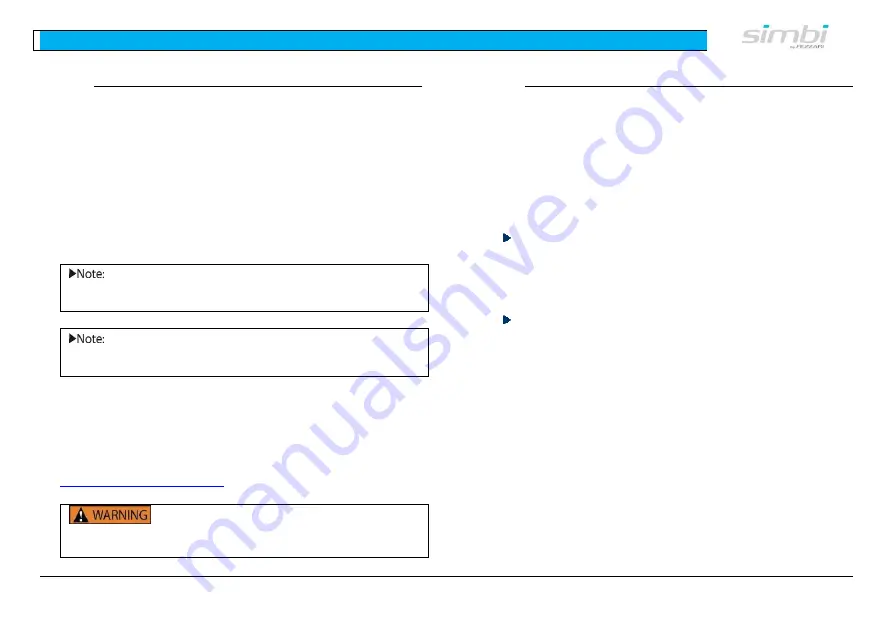
5 - Maintenance
27
E.
Wheels
i.
Tires & Tubes
All bicycle tires are somewhat porous and allow air to
seep out over time. Low tire pressure makes riding
more difficult, and can damage your rims, tires, and
tubes. Low tire pressure also causes your tires to wear
out quicker. Use a good pump with a built-in gauge
and inflate it to the tire manufacturer’s recommended
pressure, which is located on the sidewall of the tire.
Inflate tires to the tire manufacturer’s
recommended pressure, located on the tire’s
sidewall.
Tire pressure can decrease as much as 5 to
10 psi per week. Check tire pressure regularly.
Ensure that the valve cap is installed correctly.
ii.
Spokes and Wheels
Check for loose spokes, which can cause a wheel to go
out of true. To adjust spokes and wheels, take your
bicycle to a certified bicycle mechanic. You can also go
to
Loose spokes can cause a wheel to go
out of true and collapse, which could cause serious
injury or death.
F.
Lubrication
A bicycle has several moving parts that must be
lubricated regularly for optimal performance and to
prevent rust and excessive wear. Use a light bicycle
lubricant. Be careful to wipe off any excess lubricant,
which can attract dirt and dust. You can easily
lubricate the following yourself, and should do it
regularly:
Any Pivots on Brakes
(places where parts
move) – apply two to three drops of lubricant
on these places. Make sure to wipe off any
excess.
Pedals
– if pedals seem stiff to rotate, or
make noise, apply lubricant in the moving
parts, and wipe off any excess.










































